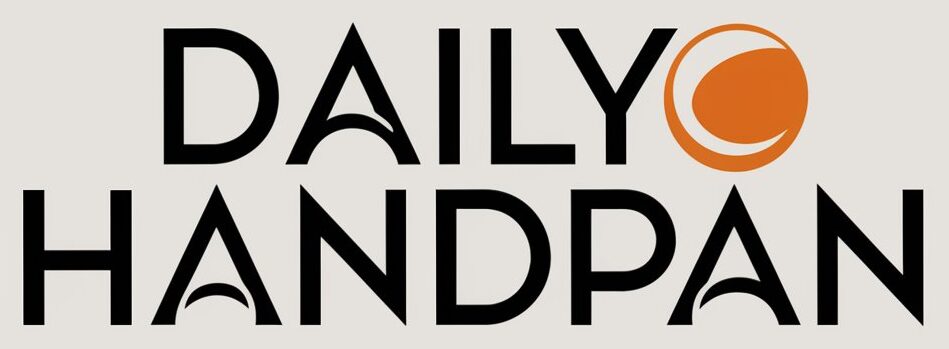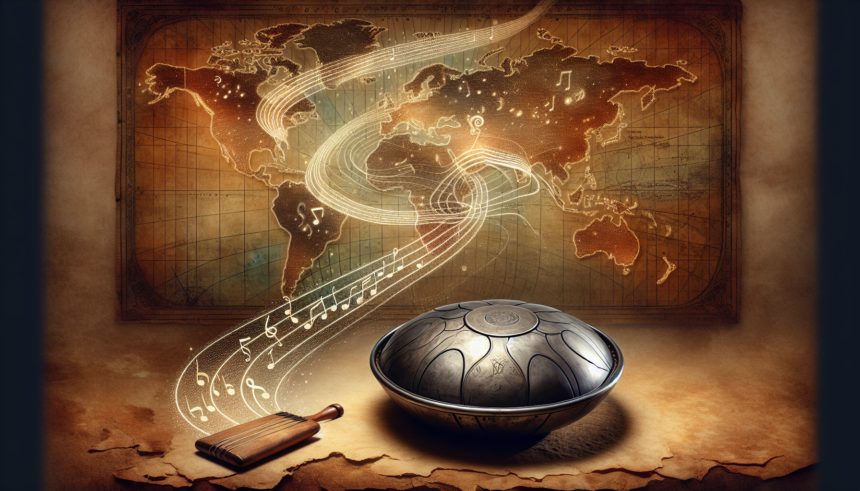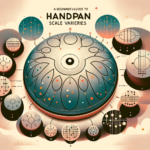Tracing Its Roots and Rise in Popularity
The Birth of a Unique Instrument
The handpan, a relatively new instrument in the realm of music creation, has captivated audiences around the globe with its enchanting sounds and unique design. The journey of the handpan began in the early 21st century, born out of a fusion of traditional and modern influences.
The handpan’s roots can be traced back to the Trinidad steel pans of the 1970s. Its closest predecessor is the Hang, developed in 2000 by Felix Rohner and Sabina Schärer, founders of PANArt, a Swiss-based company. They combined elements from the steel pan, gongs, and other resonant metal instruments to create a new idiophone. The Hang featured a convex steel shape with a central dome and a series of tonal fields carefully tuned to produce rich harmonic overtones.
A Unique Soundscape
The handpan produces a sound that is both ethereal and meditative. Its harmonic fields are meticulously tuned to create a blend of percussive elements and melodic tones. Striking the handpan produces vibrations that resonate through its metal body, generating a range of sounds that can vary from deep and resonant bass tones to bright and crisp high tones.
Musicians and listeners alike often describe the sound of the handpan as otherworldly, hypnotic, and deeply relaxing. This unique auditory experience has played a significant role in the instrument’s rise in popularity across various musical genres and cultural contexts.
Cultural Fusion and Global Appeal
One of the key factors contributing to the handpan’s popularity is its ability to bridge cultural and musical divides. While it draws inspiration from traditional instruments, the handpan has a modern aesthetic and sound that resonates with contemporary audiences. This fusion of past and present has created a universal appeal.
The handpan has found a home in diverse musical genres, including ambient, world music, jazz, and even electronic dance music. Its versatility has made it a favorite among musicians seeking to explore new sonic landscapes and incorporate unique sounds into their compositions.
The Rise of Handpan Communities
As the handpan’s popularity grew, so did the communities of enthusiasts and makers. Online forums, social media groups, and workshops have emerged, providing spaces for players and makers to share their experiences, techniques, and innovations.
Festivals dedicated to the handpan, such as the HangOut UK and the PanOz Retreat in Australia, have become hubs for musicians to connect and celebrate their shared passion. These gatherings have played a crucial role in fostering a sense of community and encouraging the expansion of handpan culture around the world.
Makers and Artistry
Creating a high-quality handpan is a blend of art and science. The process involves shaping and tuning each instrument by hand, with careful attention to detail. The skill and craftsmanship of the maker significantly impact the final sound and playability of the handpan.
Several makers have gained recognition for their exceptional handpans, each bringing their unique approach and aesthetic to the instrument. Companies like Pantheon Steel, Ayasa Instruments, and Bellart have become renowned for their innovative designs and meticulous craftsmanship.
Social Media and Viral Videos
The rise of social media platforms like YouTube, Instagram, and Facebook has played a pivotal role in bringing the handpan to a global audience. Talented musicians have shared videos of their performances, captivating viewers with the instrument’s mesmerizing sounds.
One of the most notable viral sensations in the handpan world is a video of musician Daniel Waples playing the Hang on the streets of London. The video quickly gained millions of views, introducing countless people to the instrument and inspiring many to learn to play.
Educational Resources and Learning
As interest in the handpan continues to grow, so too have the resources available for those looking to learn. Online tutorials, workshops, and instructional books have made it easier than ever for beginners to start their musical journey with the handpan.
Experienced players often share their knowledge through virtual lessons and in-person classes, helping newcomers master techniques and develop their own style. This accessibility to learning resources has democratized the handpan, allowing people from all walks of life to explore its unique sound and potential.
Challenges and Opportunities
Despite its growing popularity, the handpan industry faces challenges. The high demand for quality instruments has led to long waiting lists and high prices, making it difficult for some enthusiasts to acquire a handpan. Additionally, the labor-intensive process of making handpans means that only a limited number can be produced each year.
However, these challenges also present opportunities for innovation and growth. New makers are entering the scene, experimenting with different materials and designs to create more affordable and accessible handpans. Collaboration among makers, players, and technologists is driving the evolution of the instrument, ensuring its continued development and expansion.
Conclusion
The handpan’s journey from obscurity to global recognition is a testament to its unique charm and versatility. Its ability to blend cultures, evoke emotions, and inspire creativity has cemented its place in the modern musical landscape. As the handpan continues to evolve, its growing community of enthusiasts and makers will play a crucial role in shaping its future.
Whether you’re a seasoned musician or a curious newcomer, the handpan offers a world of sonic exploration and artistic expression. Its captivating sound and the sense of connection it fosters among players and listeners make the handpan much more than just an instrument – it is a bridge to new musical horizons and a source of endless inspiration.





